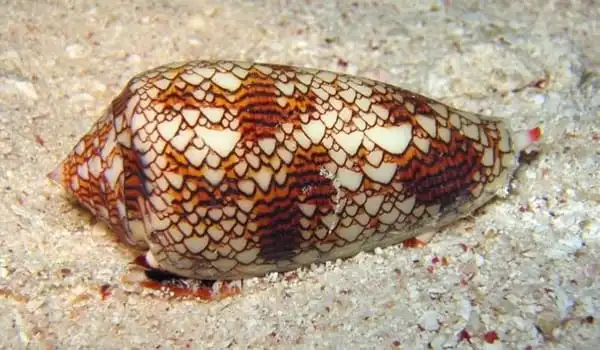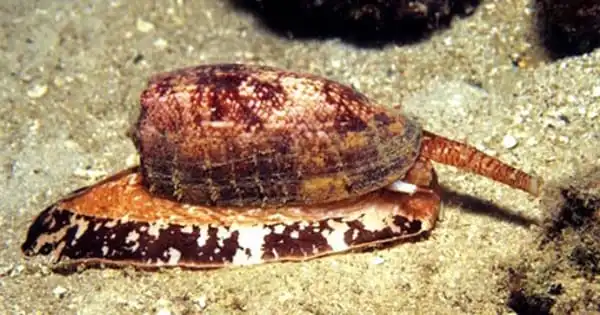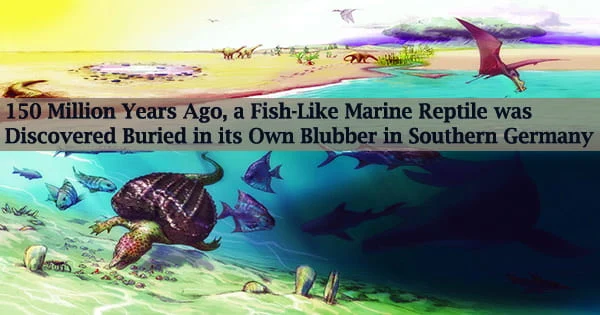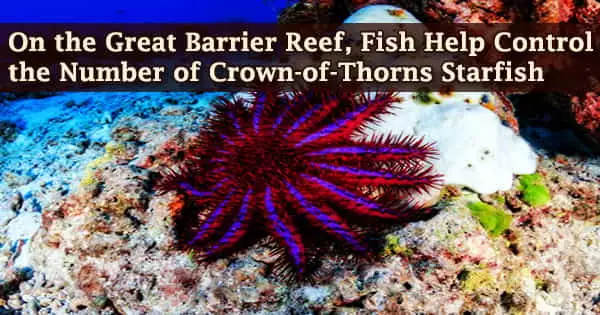A genus of cone snails creates a venom molecule identical to the protein somatostatin, according to a new study. While researchers continue to learn more about this venom molecule and its potential pharmaceutical applications, the findings demonstrate the diverse range of drug leads produced by venomous animals over millions of years.
Scientists already know that the venom of cone snails, which cruise the ocean floor for a fish feast, contains components that can be adapted as medications to treat chronic pain, diabetes, and other human illnesses. However, the venom of cone snails has further secrets that have yet to be disclosed. Researchers reveal in Science Advances that a genus of cone snails creates a venom molecule that is similar to the hormone somatostatin.
While they continue to learn more about this venom molecule and its potential pharmaceutical applications, the findings demonstrate the diverse range of drug leads produced by venomous species over millions of years.
“We need to extend the spectrum of what we expect these poisonous animals to generate, presuming that they could make anything,” says Helena Safavi-Hemami, an adjunct assistant professor at the University of Utah and an associate professor at the University of Copenhagen. “We should broaden our search and keep an open mind for completely new substances.”
Beginning in Bohol
Ramiro grew up on the Philippine island of Bohol, where the story begins. Although she and most Boholanos didn’t come into contact with cone snails very often, other than when looking for shells on the beach, fishermen understood how to discover and trap the deadly snails, which are frequently sold to shell collectors and are occasionally eaten. One fisherman told Ramiro that his parents warned him not to eat the snail’s bean-like organ.
“The bean-like structure is actually a bulb connected to the gland that produces venom,” Ramiro explains.
Some cone snails seek for fish. Some of them employ a “taser-and-tether” hunting method, in which they fire a barbed hook into a fish and administer a jolt of venom that chemically electrocutes and paralyzes the fish. Others employ a net hunting method, spewing a cloud of venom into the water that contains components that deprive the fish of sensory input and cause them to become disoriented.
Only half of the estimated eight groups of fish hunting cone snails have been thoroughly examined. The Asprella cone snails are one of the least-studied lineages. They are not, like some others, shallow-water snails. They prefer deeper seas with depths of 200-800 feet (60-250 m) and had hitherto been inaccessible to experts.
Ramiro began studying Conus rolani, a species of Asprella snail, as a graduate student at the University of the Philippines. “At the time, no one in our lab was working on it,” she explains. “I was simply looking for any short peptide (chain of amino acids) from C. rolani venom that had uncommon or interesting activity in mice.”
She discovered one. A tiny peptide in the venom made mice sluggish or unresponsive. However, it was slow-acting, which was not expected given that other cone snails produced venom that acted nearly instantly. It shared some similarities with the human hormone somatostatin (more on that later), but not enough to conclude that the venom peptide and the human hormone were functionally connected.
While exploring how and why the venom worked, Ramiro made a visit to the University of Utah, a hub of cone snail research.
We need to extend the spectrum of what we expect these poisonous animals to generate, presuming that they could make anything. We should broaden our search and keep an open mind for completely new substances.
Helena Safavi-Hemami
Cone snails at the U
Far from the glistening Pacific, U researchers have been studying cone snails and their venom since 1970, when Baldomero “Toto” Olivera moved in Salt Lake City, bringing with him the cone snail research he’d undertaken in the Philippines.
Decades of research have yielded a wealth of knowledge about how venom components interact with the bodies of prey fish, including how the venoms interact with receptors in the body and overpower natural metabolic processes. Olivera and his colleagues looked into whether these effects may be used as medications in humans. Prialt, a pain reliever, was the result of one endeavor. Another study, in which Safavi played a key role as an assistant professor at the University of Utah, looked at how insulin analogs produced by cone snails could be modified as a fast-acting insulin for diabetics.
“Cone snails somehow grab some of their hormones and transform them into weapons,” Safavi explains. As a result, she and other researchers assisted Ramiro in comparing the peptide she’d discovered, now known as Consomatin Ro1, to known human proteins.
Frank Whitby, a research associate professor in the Department of Biochemistry, determined the structure of Consomatin Ro1 using X-ray crystallography. “This was a crucial addition since it demonstrated that Consomatin Ro1 does not resemble somatostatin but rather resembles octreotide, a pharmacological analog of somatostatin,” explains Christopher Hill, distinguished professor of biochemistry.
Meanwhile the research team also worked with local fishermen off Cebu, an island near Bohol, to bring Asprella specimens to the lab to observe their behavior and learn more about their biochemistry.

Snails and snakes
Somatostatin is a hormone that acts as an inhibitor in humans and many other animals, similar to a wet blanket. It is the primary growth hormone inhibitor and can be used to treat the overgrowth disorder acromegaly. It also inhibits pancreatic hormones as well as pain and inflammatory signals.
“So it’s this hormone that has a lot of various purposes in the human body,” Safavi explains, “but it’s always inhibiting something.” As a result, it has long been an intriguing hormone for therapeutic research.”
How might a slow-acting hormone like somatostatin be used as a weaponized venom? According to the experts, the simplest way to explain this is to look to another predator with slow-acting venom: the rattlesnake.
Rattlesnakes, vipers, and cobras have devised a hunting method to protect themselves from potentially aggressive prey. The snakes strike, injecting venom, and then flee. They then wait and follow their victim until the poison has had its full effect and the animal is dead or nearly dead, making it safe to approach and devour.
The strike-and-release hunting method of rattlesnakes was observed in cone snails in tanks. The snails would wait for up to three hours after injecting venom before administering a second injection and waiting again.
“And they only arrive and consume it when the victim is truly paralyzed and unable to swim,” Safavi explains. “If you don’t catch the prey right away, you have the benefit of just waiting until the prey can’t move any longer. This is especially crucial if the victim can fight back.”
What role does a venom component that mimics somatostatin play in this strategy? It’s still a mystery. According to Safavi, the study found that Consomatin Ro1 can block pain in mice with an effectiveness comparable to morphine, and it might be used to inhibit pain so that prey does not realize it has been struck. These toxins may be used for a variety of goals by different types of fish hunters.
Tiny drug designers
Consomatin Ro1 is structured “like if it were developed by drug producers” as a somatostatin analog, according to Safavi. The molecule is short, stable, and effective at binding to the receptors that it targets. That is most likely a reflection of the evolutionary process. Cone snails most likely began using their own somatostatin in venom and subsequently optimized the molecule for maximum efficiency via generations of trial and error. That’s a benefit for us since the biology of fish and people is similar enough that a substance that works well in fish would most likely work well in humans.
It remains to be known whether Consomatin Ro1 is more successful than existing somatostatin analog medicines used to treat growth problems or malignancies.
“The advantage of cone snails is that there are so many different species,” Safavi says. “We also know that many of these species produce somatostatin, so the chances of discovering the best analog are rather high.”
Future directions
Following that, the researchers plan to look into the origins of Consomatin Ro1 in snails, as well as better comprehend the compound’s potential as an anti-inflammatory or pain reliever. They’ll also check into whether any changes to the chemical could make it even more useful. The findings demonstrate how venomous animals can convert a hormone into a weapon, implying that the variety of biochemical tools in venom may be greater than previously imagined.
“There is evidence that viruses can also turn hormones into weapons,” says Safavi. “We may spend a lot of effort trying to create good hormone drugs, or we can try to look at nature more frequently. And I believe that if we performed the latter, we would be more effective or speedier in our drug development efforts.” Safavi will continue her research when she returns to the University of Utah as an assistant professor of biochemistry in the summer of 2022.
“This provides insight into the creation of next-generation medicines,” Hill explains. “More broadly, this is an excellent example of how natural selection has already produced drug-like natural compounds with significant potential to enhance human health.”
















